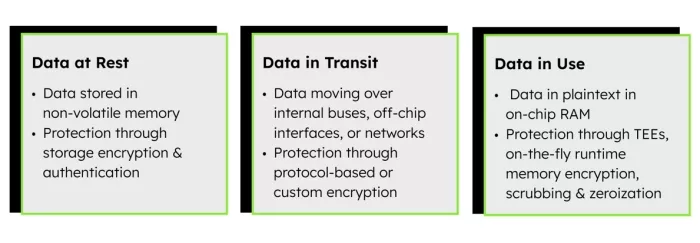Automotive Reckoning: Industry Leaders Discuss the Race to Redefine Car Development
Today’s automotive industry has the accelerator stomped to the floor, pushing product development teams to work at breakneck speed.
New automakers, particularly in China, now release fully redesigned models every two years or less, which is half to a quarter of the time it takes car makers in Japan, Korea, Europe, and North America. To stay competitive in a global market when growth is levelling off, legacy automakers (OEMs) are being forced to completely rethink how they engineer cars — and even changing the concept of what a car is.
“The amount of change happening in the industry is greater than it’s ever been,” said Judy Curran, automotive CTO at Ansys, during a panel discussion at the inaugural Synopsys Executive Forum. “All of the OEMs and their suppliers are having to re-engineer faster and change their product development process.”
Software and silicon, alongside data and AI, play increasingly critical roles in driving value and differentiation in cars.
“There is a reckoning in how [OEMs] think about the product,” said Ravi Subramanian, chief product management officer at Synopsys. “Is it a physical, electrical, and mechanical system, or is it a software-based, service-oriented platform?”
Software-defined vehicles
Sundararajan Ramalingam has a front-row seat for the transformation. As VP of research and development for Mercedes-Benz R&D North America, Ramalingam said the traditional OEM development model relies heavily on front loading requirement specifications to a complex network of in-house and external suppliers.
“Our job is mainly the integration of all these parts, to test it over the lifecycle and do a lot of validation, before releasing the product,” he said. “But if you look at new age OEMs, they are not dependent on a lot of suppliers. They do not try to fight with these partners on development speed.”
This is especially true when it comes to the core technology — software that is increasingly redefining vehicles. Similar to consumer products, newer car makers control the chip, software, tooling environment, and the data pipeline that feeds further development.
“When you control the complete tool chain, the agility lies in the hands of the OEM,” said Ramalingam.
Like many OEMs, Mercedes-Benz is trying to move from traditional signal-based architecture — Electronic Control Units (ECUs) that send and receive specific signals tightly coupled with hardware functions — to a service-oriented architecture focused on software, where new functions and third-party integrations can be delivered rapidly, even once the car is already in a customer’s driveway.
“As the vehicle ages, you will be able to update the software at the highest level,” said Curran. “The goal is to save money because you can fix orientations in the field, or you can sell features post-sale of the vehicle.”
But it’s a long road to get there.
A modern car has 80-plus ECUs — often from many different suppliers, each running its own software. Integrating the ECUs to achieve ultra-low latency drags out development time. OEMs are now at various stages of consolidating the ECUs down to four or five domain or zonal controllers.
“There’s a lot of work to be done,” said Curran, “redesigning all the modules, chips, and software, because that all needs to come together.”

Left to right: Sam Abuelsamid (moderator), Judy Curran (Ansys), Sundararajan Ramalingam (Mercedes-Benz R&D North America), and Ravi Subramanian (Synopsys) at Synopsys Executive Forum
Virtualized validation
Testing all of these complex and integrated systems is another matter. Today, time-consuming physical testing still dominates, costing 60-75% of a development program. To reduce that cost and accelerate engineering processes, car makers are turning to simulation, data, and virtual models of real-world scenarios.
“You need virtual models of all the sensors that you’re reading and all the hardware that you’re controlling, so OEMs are creating this virtual ecosystem to validate the software,” said Curran. “We want to virtually develop, design, and test this vehicle, so we minimize the amount of money spent on prototyping.”
But that requires a platform where all the suppliers can provide models of their components so OEMs can validate the full system.
“You have multiple domains working together,” said Subramanian. “That is the biggest challenge in realizing the promise of virtualization.”
New mindset, new skills
Developing cars with software as a primary driver will require OEMs to completely transform their engineering processes, melding methodical safety-first cultures with the move-fast approach of the tech industry.
“The speed of innovation in China is creating a day of reckoning for many engineering teams,” said Subramanian. “You need a different mindset in terms of product management and how the engineering teams are staffed with what skillsets. It’s the biggest change in 100 years.”
While challenges remain, an exciting new era for the automotive sector is dawning, one that will redefine how cars are designed, built, tested — and driven.
Note: This article contains statements made during a panel discussion at Synopsys Executive Forum, held March 19, 2025, in Santa Clara, California.
Related Semiconductor IP
- HBM4 PHY IP
- Ultra-Low-Power LPDDR3/LPDDR2/DDR3L Combo Subsystem
- MIPI D-PHY and FPD-Link (LVDS) Combinational Transmitter for TSMC 22nm ULP
- VIP for Compute Express Link (CXL)
- HBM4 Controller IP
Related Blogs
- Memory Trends for Automotive Markets
- CDNDrive: Cadence Automotive IP Solutions
- Automotive Software Development Used to End with SOP
- Cadence IP Is Great for Automotive
